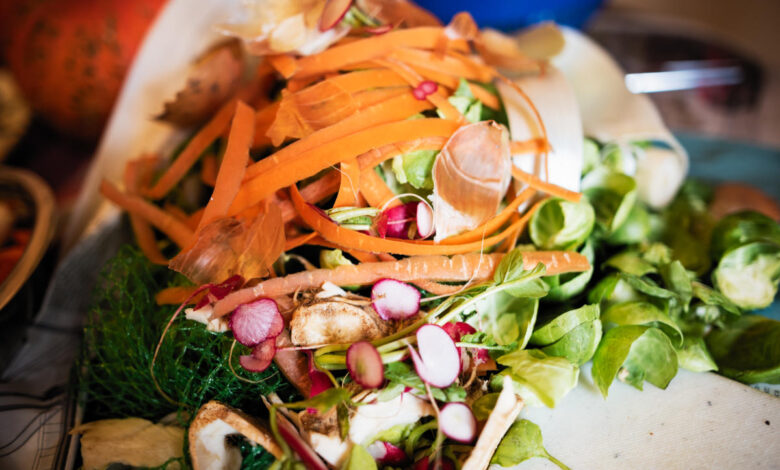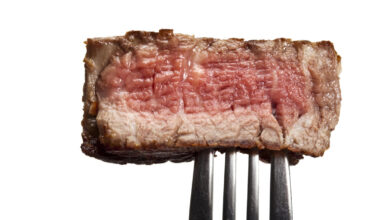You’re probably throwing away these food scraps. Here’s why eating them is good for you and the environment.

Between 30% and 40% of America’s food supply goes to waste — literally is thrown away — each year, according to the U.S.Department of Agriculture (USDA). Some of the parts of foods we assume are garbage are not only edible but also nutritious. From peels to stems to rinds and more, sometimes what we assume to be scraps are actually as or more nutrient dense than the parts we usually eat. If Earth Day has the environment on your mind, using them will both benefit you and help reduce the amount of methane — one of the most harmful greenhouse gases — released into the air from food rotting in landfills.
Here’s what to know.
Eat the peels
“It’s kind of amazing to me that people peel things,” P.K. Newby, nutritional scientist and founder of Food Matters Media, tells Yahoo Life. She says that the peels of many fruits and vegetables — including carrots, apples, potatoes, eggplant and sweet potatoes — are perfectly edible and are “where you have so much of the nutritional value.”
Newby notes that many peels are rich in fiber, vitamins and minerals. They’re also where vegetables and fruits, including nuts, store their protective phytochemicals, which are part of a plant’s immune system and provide humans that eat them with similar effects, according to the University of California, Los Angeles (UCLA). Phytochemicals help prevent cell damage, which means they even protect against the development of cancer.
As a rule of thumb, “whatever the plant is doing for itself, it’s going to do for you,” when you eat it, says Newby. For example, “eggplant is a great vegetable that’s higher in fiber and then its rich purple color is bursting in what’s called nasunin, which is a powerful plant chemical, and you’re only going to get that in the skin,” she explains. Nasunin has anti-cancer properties and helps prevent damage to brain cells and slows the signs of aging. “Plants have beautiful bright colors, in part, to attract or to fend off pests or different species, so that same benefit goes to the person eating that.”
Similarly, the peel of an apple is the most nutrient dense part of the fruit. An unpeeled apple has higher quantities of vitamins A, C and K compared to those in a peeled apple, and is richer in calcium and potassium as well, according to the USDA. The statistics are similar for an unpeeled potato, which contains more vitamin C, potassium, folate, magnesium and phosphate than a peeled one does, according to the USDA.
If you’re worried about pesticides, don’t sweat it too much, Newby says. “The health benefits of the peels outweigh the risk of the pesticides,” she says. While eliminating pesticides from the environment is important to prevent the contamination of water, soil and animals, the risk to human health of pesticide on the exterior of produce is fairly minimal, according to the Environmental Protection Agency (EPA). Most pesticide residue — which is tightly regulated — will be removed simply by washing your produce. Concerns about pesticide on peels are often “misguided,” says Newby. “They’re missing the forest for the trees.”
Cook the roots, leaves and stems
“The outer leaves, the stems — the entire cauliflower is edible,” Newby says, adding that you can roast and eat the whole cauliflower or broccoli plant. “That’s where you can save some food dollars and get more nutritional value and less food waste,” she says.
Not only do you get more nutrients when you consume an entire fruit or vegetable, you also get more diverse nutrients. “The leaves and roots of the same plant species are going to differ in their nutrient content,” Newby says. Since plants grow from their roots, this is where they store energy in carbohydrates in both starch and sugar forms, Newby explains. The leaves, however, are responsible for photosynthesis, which is made possible by a host of vitamins and minerals, including potassium, calcium, phosphorus, magnesium and zinc, according to the Smithsonian Environmental Research Center, along with disease-fighting phytochemicals.
”The leaves are often more nutritious than the roots, just because they have a better balance of vitamins and minerals,” Newby says. Plus, there’s a good dose of fiber in most leafy greens, too.
She’s particularly fond of roasting beets — unpeeled — along with their leaves. You can use the whole carrot, too, but since the greens can be a bit bitter, Newby suggests using them to make a pesto (she likes to say, “You can pesto that” about many greens that may not be immediately appealing to you or your family).
Make it into a nutritious stock
If you are not sure you can eat a food scrap outright, you can most likely still use it to make a hearty, nutritious vegetable stock, Newby advises. She keeps a bag in her freezer to collect scraps like parsley stems, carrot tops and the ends of celery stalks, potatoes and parsnips over time. You can even save and make use of otherwise inedible parts of fruits and vegetables, like onion skins.
“Quercetin, a powerful antioxidant, is mostly located in the outermost layer of the onion skin,” explains Newby. Not only is quercetin an antioxidant — meaning it fights cell damage from free radicals — it’s also anti-inflammatory and antiviral and has properties that may help protect against diabetes, heart disease, cancer and neurodegenerative disease, according to the Icahn School of Medicine at Mount Sinai.
Rather than eating raw onion skins, which are hard to digest and can cause digestive issues, Newby suggests tossing them into a vegetable stock or tomato sauce along with other saved scraps. They’ll be sieved out of the stock in the end, but “you’re getting all of those nutrients, and you have a beautiful stock that’s salt free and you’ve used up all those things.”
While you’re loading your stock with nutritious scraps, you’ll also be preventing food from being wasted, like 45% of fruits and vegetables globally. Newby advocates composting whatever food you can’t make use of, but she acknowledges that many people may not have access to composting drop-off or pickup locations. “Composting is really after-the-fact,” says Newby, who instead focuses on using as much as possible of the food she buys. “I create so little garbage and not much compost; you’re not throwing things away, you’re reducing what gets thrown away,” whether in the garbage or the compost bin, by using every part of your produce, Newby says.




